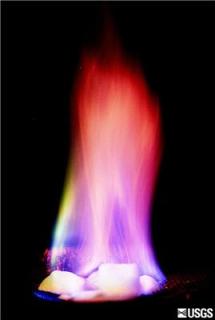Apr 24 2015
Gas hydrate is also known as the ice that burns. And all that burns releases energy. And a lot of energy is stored in hydrates: a cubic meter of methane hydrate, for example, compresess as much as 168 m3 of the natural gas. And there are gigatonnes of it stored in the sediments of the oceans.
 Gas hydrates are also known as ice that burns. Photo: USGS
Gas hydrates are also known as ice that burns. Photo: USGS
Several countries are therefore interested in developing technologies that can take advantage of this energy resource.
Japan, USA in the race for exploitation
Gas hydrate accumulations in continental shelf sediments are considered a promising resource for future gas supply by several non-European countries, such as USA, Japan, China, India, South Korea, and Taiwan. In 2013, the Research Consortium for Methane Hydrate Resources in Japan produced gas during a successful offshore field test.
Recently a European Concerted Research Action (COST) was established designated to marine gas hydrates. Marine gas hydrate – an indigenous resource of natural gas for Europe (MIGRATE) will examine the potential of gas hydrates as an economically feasible and environmentally sound energy resource.
Stefan Bünz, associate professor at Centre for Arctic Gas Hydrate, Environment and Climate (CAGE) at UiT The Arctic University of Norway, was elected the Vice Chair of the action.
European inventory
MIGRATE aims in perticular to to determine the European potential inventory of exploitable gas hydrates, to assess current technologies for their production, and to evaluate the associated risks.
“With the wide spectrum of gas hydrate research undertaken in CAGE, we will significantly contribute to three of the working groups in MIGRATE: resource assessment; exploration, production and monitoring technologies; and environmental and geohazard challenges. “ says Bünz.
CAGE will particularly contribute with a large seismic database from the Norwegian and Arctic margins and development of seismic-based technologies.
The European Concerted Research Action (COST) is networking instrument for cooperation between researchers, engineers and scholars to coordinate nationally funded research activities.